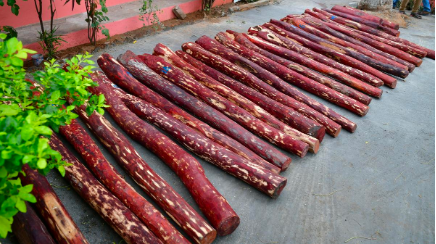A fact sheet prepared by TRAFFIC has revealed that the CITES trade database has recorded 28 incidents of Red sanders confiscation, seizure and specimens from the wild being exported from India.
![]() 3 Feb 2023
3 Feb 2023
Context:
A fact sheet prepared by TRAFFIC has revealed that the CITES trade database has recorded 28 incidents of Red sanders confiscation, seizure and specimens from the wild being exported from India.

Image source: The Hindu
About Red Sanders:
Protection Status:
Threats:
| Additional Information:
About CITES:
|
News Source: The Hindu

<div class="new-fform">
</div>